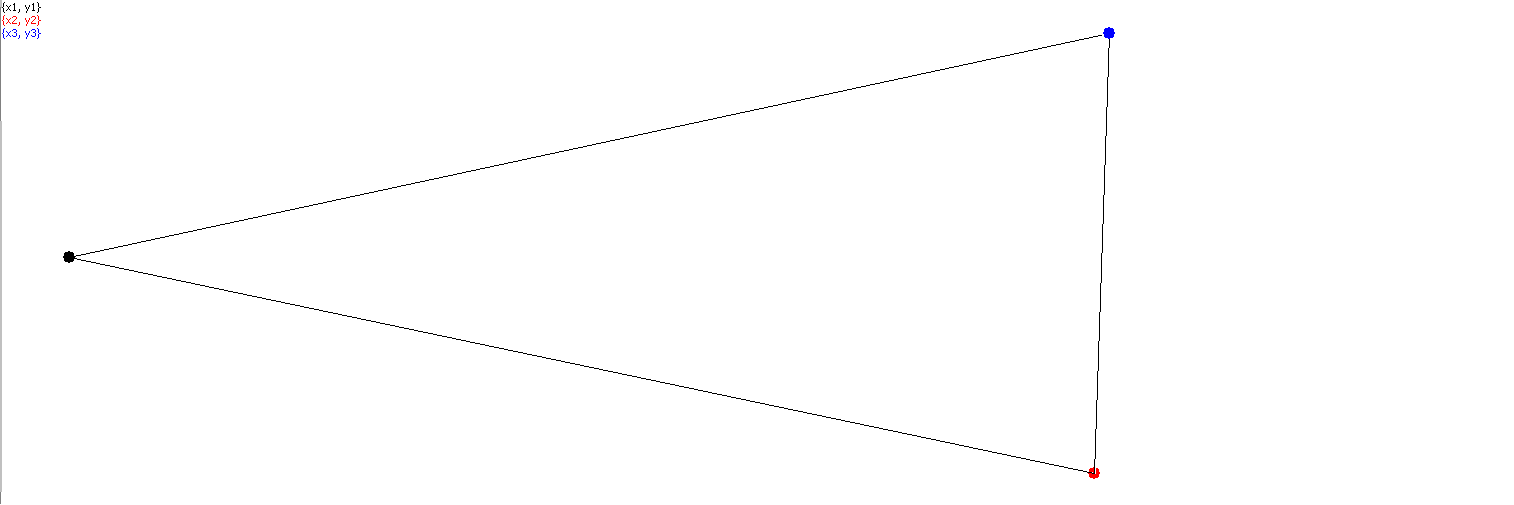The figure eight solution:
 Three equal masses chase each other around a figure-eight shaped curve
under the influence of their mutual gravitational attraction.
Initial conditions (thanks to C Simo) :
Three equal masses chase each other around a figure-eight shaped curve
under the influence of their mutual gravitational attraction.
Initial conditions (thanks to C Simo) :
Positions: (x1,y1) = -(x2,y2); (x3,y3) = (0,0) ; (x1,y1) = (-0.97000436, 0.24308753) Velocites: (vx1,vy1) = (vx2, vy2) = -(vx3, vy3)/2; (vx3,vy3) = (0.93240737, 0.86473146) Parameters: m1 = m2 = m3 = 1 =G. ..viewed as a moving triangle:  > >
|
a Popularization: PBS video on 3-body Choreographies: Minton's build-your-own over 300 planar three-body choreographies, found by C. Simo; , implemented by P.Masson . (most have non-zero angular momentum) more ones mimicing platonic solids; C Moore's , etc Book: Four Open Questions in the N-body Problem (draft) in progress The equal mass zero angular momentum three-body problem: Danya Rose's 2015 thesis and Bestiary More than 300 periodic solutions. Views from regularized shape space. Uses symplectic integration and regularized eqns 100s of periodic orbits by Suvakov & Dmitrasinovi. All start from the Euler config like the figure eight: one mass lying at the midpoint of the other two. Isosceles Solutions infinite families found by Nai-Chia Chen. (Hello Paul Klee!) Fujiwara, animations showing the three tangents theorem and other beautiful 3-body theorems Braking News non-collision periodic brake solutions by Li and Liao. More animation sites the 3-4-5 problem. Burtle-burtle's. Vanderbei's Open Problems , compiled by Albouy, Cabral, and Santos ***************** tours ; rather disorganized; some broken links; here primarily for giving public lectures ***************** Scholarpedia : 3-body problem -Chenciner N-body choreographies (-me) stuff posted before 2011and largely unedited since 5 Lectures on the N body Problem, Madrid ** fix link Richard !! ** (unpublished) An unpublished arxival version ``Figure 8s with three bodies'' (an earlier incomplete unpublished version of the eventual paper with Chenciner. See commentary below.) Commentary on the eight. Alain Chenciner and I rediscovered this surprising orbit for the Newtonian three body problem: with three equal point masses chase each other 'round a figure eight in the plane C. Simo has shown (numerically) that it is (KAM) stable: more precisely: as stable as a general periodic orbit in a 3 degree of freedom Hamiltonian system can be (pure imag. eigenvalues, torsion non-zero). Cris Moore , (Santa Fe inst.) had earlier found the same, via numerical integration and a gradient search. In a Physical Reviews Letters paper, 1993, vol 70. In 2003 Fujiwara and I gave an analytic proof that each of the eight's two lobes are convex.
thanks to
Carles Simo
numerical wizard.
(The initial positions are chosen to be collinear, with center of mass zero.
The initial velocities are chosen so that the total linear and angular momenta
are zero, and so that the total moment of inertia $\Sigma m_a (x_a ^2 + y_a ^2)$
is extremized. This leaves two free parameters represented by the velocity of mass 3.)
|